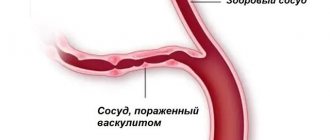A third of the world's population suffers from inflammatory processes in the kidneys. But not many people know that these problems, for the most part, are associated with pyeloectasis of the right kidney and only sometimes - with the left. With this anomaly, the renal pelvis expands. This happens due to the accumulation of fluid in it, which then travels through the ureters to the bladder.
- Causes and forms of the disease
- Symptoms and complications of pyeelectasis
- Establishing diagnosis
- Therapy (treatment) and prevention
What is pyelectasia?
Pyeloectasia is an expansion of the renal pelvis (pyelos (Greek) - pelvis; ectasia - expansion). In children, as a rule, pyeelectasis is congenital. If the calyxes are dilated along with the pelvis, then they speak of pyelocalicoectasia or hydronephrotic transformation of the kidneys. If the ureter is dilated along with the pelvis, this condition is called ureteropyeloectasia (ureter), megaureter or ureterohydronephrosis. Pyeelectasis is 3-5 times more common in boys than in girls. There is both unilateral and bilateral pathology. Mild forms of pyelectasis often go away on their own, while severe forms often require surgical treatment.
Classification of the syndrome
There are two forms of this condition depending on the degree of damage to the urinary organs:
- unilateral pyeelectasis of either the left or right kidney;
- bilateral pyelectasis of both kidneys. This condition requires immediate measures to solve this problem, since enlargement of the pelvis of both kidneys at once has a detrimental effect on the entire urinary system, and on the general condition and functionality of the body.
This syndrome is classified according to severity - mild, moderate or severe. It is important to take into account the volume of active preserved tissue and the presence of an inflammatory process, as well as pay attention to the presence of signs of renal failure.
If the syndrome progresses very quickly, the doctor diagnoses hydronephrosis, which has a unique set of symptoms that helps identify the presence of the disease. For example, these are nagging pain in the lower back, frequent urination and high blood pressure, which leads to fatigue, headaches, and a complete decrease in performance.
If the pelvis and calyx increase in size at the same time, this can lead to complete transformation of the kidney.
What can be an obstacle to the outflow of urine?
Often, an obstacle to the outflow of urine from the kidney is a narrowing of the ureter at the junction of the pelvis and the ureter, or when the ureter flows into the bladder. Narrowing of the ureter may be a consequence of its underdevelopment or compression from the outside by an additional formation (vessel, adhesions, tumor). Less commonly, the cause of impaired urine outflow from the pelvis is the formation of a valve in the area of the ureteropelvic junction (high ureteric outlet). Increased pressure in the bladder, resulting from a disruption of the nerve supply to the bladder (neurogenic bladder) or from the formation of a urethral valve, can also impede the flow of urine from the renal pelvis.
Prevention and treatment of pyelectasis
As a rule, in the case of congenital pyelectasis, surgical intervention is not possible. In this case, the narrowing of the ureter will be expanded using a stent - a frame that expands during installation and maintains the expanded position.
If pyeloectasia is formed as a result of urolithiasis, then treatment is aimed at eliminating the stones. Most often, doctors try to solve the problem without surgery; surgical methods are used in extreme cases.
It is worth noting that self-medication for pyeelectasis is very dangerous. The doctor prescribes treatment only after passing all the examinations and passing all the necessary tests.
Prevention of the anomaly includes timely identification of the problem, as well as complete treatment with impeccable compliance with all the doctor’s instructions, restriction in the use of liquids, and so on.
Pyeelectasia is an enlargement of the renal pelvis, which causes urine to accumulate in the pelvis before being discharged through the ureter. Pyeelectasia is not a disease, but a syndrome resulting from other kidney diseases. Timely detection of the problem and proper treatment can relieve pyeelectasis and protect against the development of complications. Be healthy!
What diagnostic methods are used for pyeelectasis in a newborn?
For mild pyelectasis, it may be sufficient to conduct regular ultrasound examinations (ultrasounds) every three months. If a urinary infection occurs or the degree of pyelectasia increases, a complete urological examination is indicated, including radiological research methods: cystography, excretory (intravenous) urography, radioisotope study of the kidneys. These methods allow you to establish a diagnosis - determine the level, degree and cause of the disturbance in the outflow of urine, as well as prescribe reasonable treatment. The research results themselves do not constitute a verdict that unambiguously determines the fate of the child. The decision to manage the patient is made by an experienced urologist, usually based on observation of the child, analysis of the causes and severity of the disease.
Causes
The following factors provoke pathology:
- stones
- pregnancy in which the uterus enlarges and blocks the tubes connecting the kidneys to the bladder
- prostate adenoma, in which an enlarged gland presses on the urethra
- stricture (narrowing) of the urinary tract resulting from congenital anomalies, surgery, infection or trauma
- some types of cancer
- formed blood clots, etc.
Important! In some cases, the pathology is congenital.
What diagnoses are made based on the examination?
Some examples of common diseases accompanied by pyelectasis:
- Hydronephrosis caused by an obstruction (obstruction) in the area of the ureteropelvic junction. It manifests itself as a sharp dilation of the pelvis without dilatation of the ureter.
- Vesicoureteral reflux is the backflow of urine from the bladder into the kidney. It manifests itself as significant changes in the size of the pelvis during ultrasound examinations and even during one examination.
- Megaureter - a sharp dilation of the ureter can accompany pyelectasis. Causes: severe vesicoureteral reflux, narrowing of the ureter in the lower section, high pressure in the bladder, etc.
- Posterior urethral valves in boys . Ultrasound reveals bilateral pyelectasis and dilatation of the ureters.
- Ectopic ureter - The flow of the ureter not into the bladder, but into the urethra in boys or the vagina in girls. Often occurs with double kidneys and is accompanied by pyeelectasis of the upper segment of the double kidney
- Ureterocele - the ureter, when it enters the bladder, is inflated in the form of a bubble, and its outlet is narrowed. Ultrasound reveals an additional cavity in the lumen of the bladder and often pyelectasis on the same side.
Establishing diagnosis
During a routine ultrasound examination of a pregnant woman, the doctor may detect pyeelectasis of the fetal kidney. Boys are more susceptible to this disease. In addition, statistics claim that the cause is most often dilation of the pelvis. In some cases, such diseases occur at a time when the child’s internal organs are growing too quickly. For the most part, pyeelectasis in children is congenital. This disease affects an adult as a result of a stone entering the ureter, which then becomes blocked. Accordingly, for any variant of the development and course of urolithiasis in the patient, an ultrasound examination of the affected organs is indicated.
Such an examination allows for accurate diagnosis and allows one to determine how static the size of the pelvis is before and after urination. At the same time, the progress of possible changes in organ size is monitored throughout the year. In certain cases, the doctor prescribes studies such as urography and cystography. They are necessary because the course of pyeloctasia changes greatly all the time. Accordingly, diagnostic methods need to be improved. In the case when pyeloectasia develops in both the right and left kidneys, the disease is severe, frequent relapses are inevitable, and even in the case when a complete cure occurs.
Symptoms of kidney hydronephrosis
There are no obvious signs characteristic exclusively of this pathology. It should also be taken into account that in some cases the problem has no symptoms. It is discovered accidentally during an examination (including when other diseases are suspected).
If signs of pathology appear, the degree of their severity largely depends on how the outflow of urine was blocked. If the blockage was caused by stones and it developed quickly, then the symptoms of kidney hydronephrosis will appear quickly and quite clearly. Also, the clinical manifestations of the pathology depend on the location and duration of blockage of the outflow of urine.
The main features include:
- pain in the side or back
- the appearance of blood in the urine
- infrequent urination with a weak stream
- cloudy urine
- desire to strain when urinating
Often the only symptom of the pathology is pain, which can be either aching and dull, or paroxysmal and quite severe.
Call now (495) 7 800 500
Leave a request
You will receive an automatic call back, wait for the operator to respond.
* By clicking the “Order a call” button, you agree to the processing of your personal data by JSC Group
Policy regarding the processing of personal data Consent to the processing of personal data
Make an appointment
Diagnostics
Since hydronephrosis of the left and right kidneys is often asymptomatic, it is very important for the doctor to identify the pathology in a timely manner. Basic modern examination methods can successfully solve this problem.
Usually the patient is prescribed:
- Ultrasound. The study is performed using a special biplane sensor, which ensures high diagnostic accuracy. It scans organs in transverse and longitudinal sections. This allows the doctor to obtain a clear image with minimal artifacts
- Multislice computed tomography. It is performed with dynamic contrast. First, the affected kidney is examined without contrast, and then the doctor takes images with contrast. Thanks to this, hydronephrosis can be detected in the early stages
- MRI. This survey is also highly informative
In addition, low-dose abdominal radiography, ECG, blood and urine tests may be performed.
Important! If a patient is at increased risk of developing the disease, he should undergo an annual comprehensive examination and consult with a urologist. This will allow pathology to be identified and eliminated in time.
Complications
The pathology is dangerous because it can provoke the following complications:
- Pyelonephritis. This process is infectious and affects the pyelocaliceal organ system.
- Formation of stones (secondary). They are formed when the natural outflow of urine is disrupted.
- The appearance of severe pain that does not allow the patient to lead a normal lifestyle
- Pyonephrosis
- Decreased organ function
The most dangerous complication of hydronephrosis is chronic renal failure. Its outcome is often a violation of all organ functions. If both kidneys are affected, then the person simply will not be able to live without further constant dialysis (filtration of blood outside the body using a special device) or a kidney transplant.
Call now
(495) 7 800 500
Leave a request
You will receive an automatic call back, wait for the operator to respond.
* By clicking the “Order a call” button, you agree to the processing of your personal data by JSC Group
Policy regarding the processing of personal data Consent to the processing of personal data
Make an appointment
Advantages of contacting MEDSI
- Experienced doctors.
We employ urologists, surgeons and other specialists who have the necessary knowledge and skills for the successful treatment of renal hydronephrosis even in advanced cases (including those with associated complications) - Early detection.
We have the capabilities to perform all necessary laboratory tests and instrumental examinations - Use of innovative technologies.
The latest developments in the field of medical equipment (laparoscopy, da Vinci Si robot, 100 W holmium laser) allow us to perform unique operations with minimal risk of complications, without incisions, with a short rehabilitation period and high efficiency - Ensuring a speedy recovery.
We treat hydronephrosis using the Fast-track principle. Little time passes between preparation for surgery and discharge from the hospital. - Comfort of treatment.
We have a modern hospital and provide full patient monitoring
To clarify the terms of service or make an appointment with a urologist, just call +7 (495) 7-800-500. Our specialist will answer all questions. Recording is also possible through the SmartMed application.









